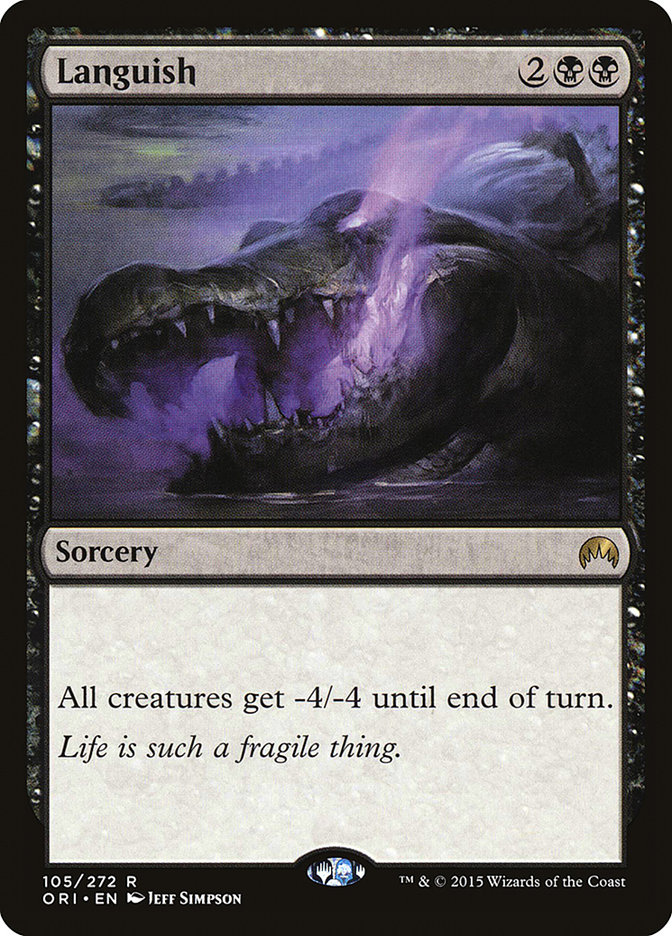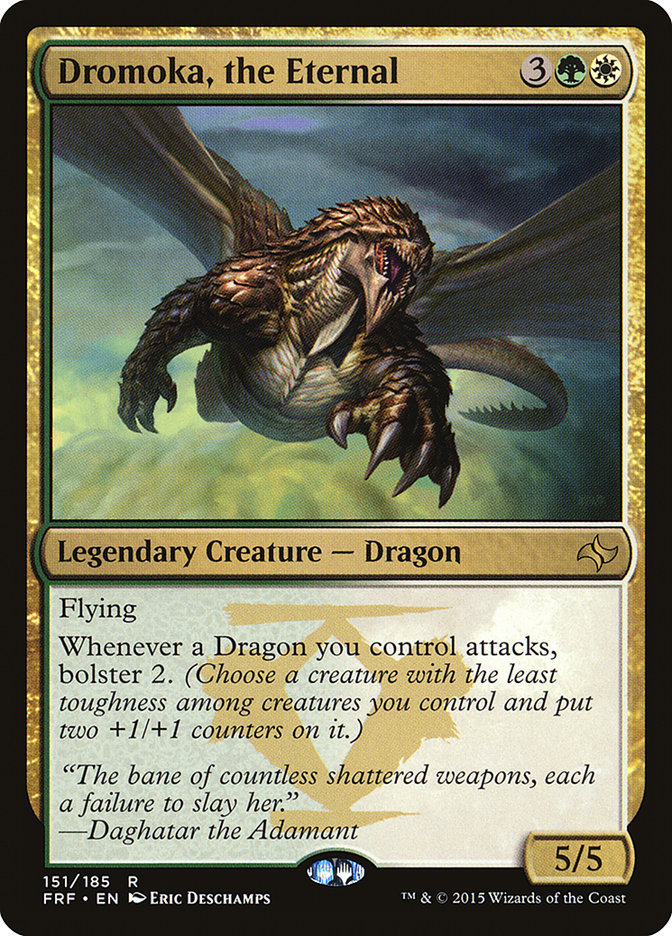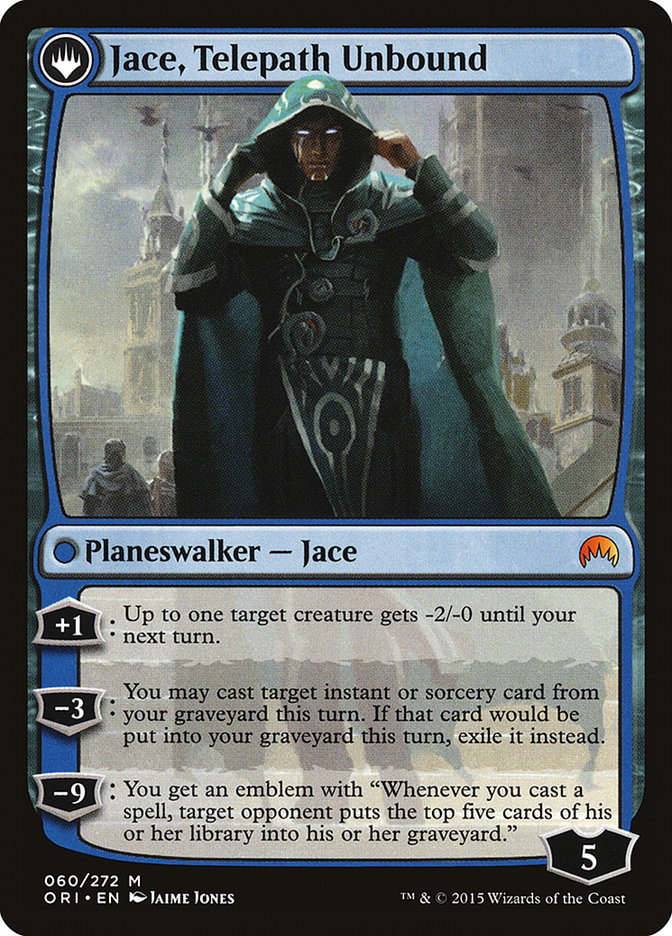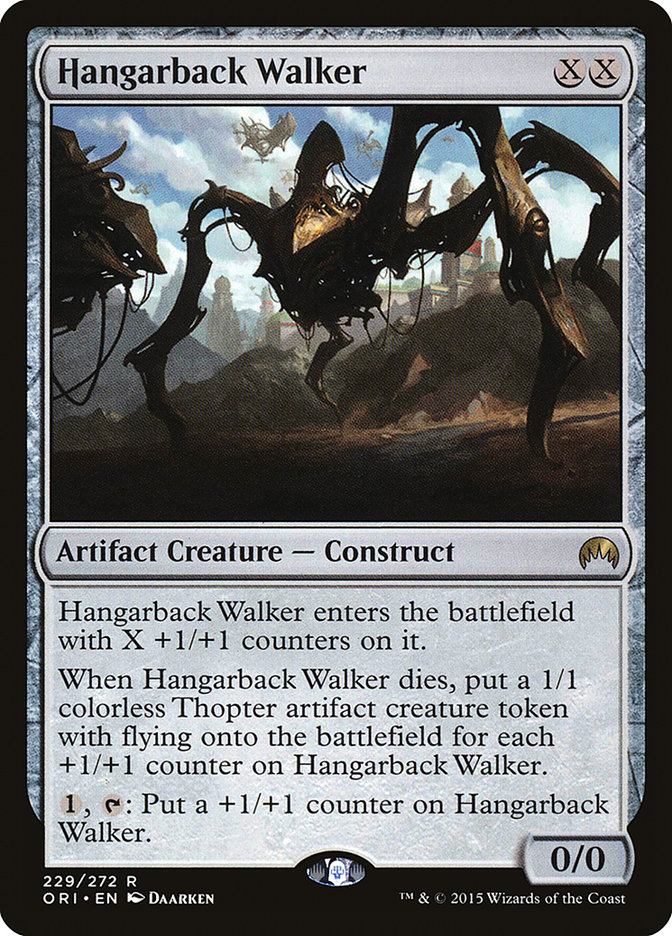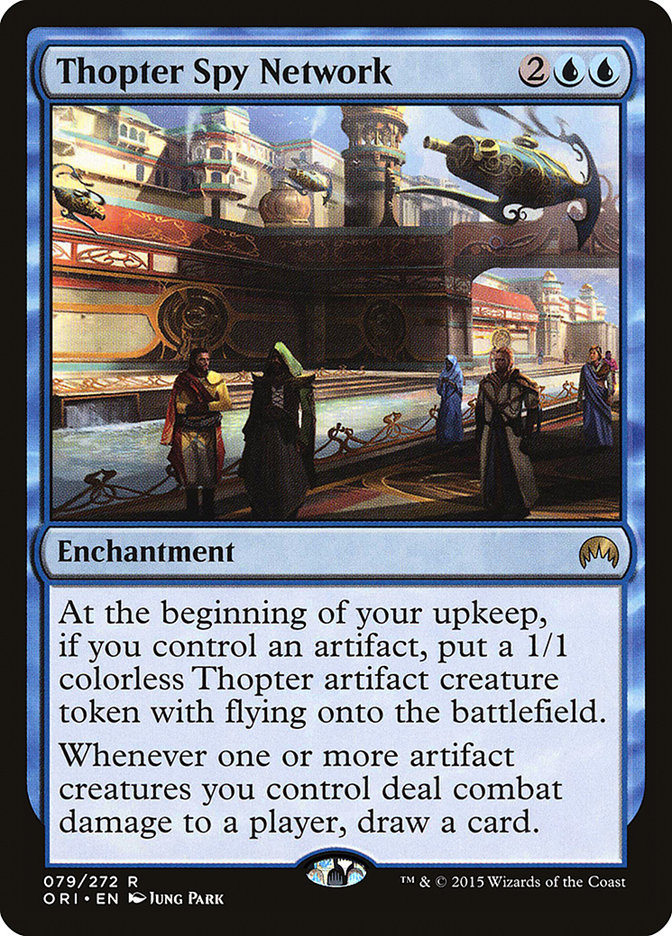I’m not gonna lie, I was originally a bit disappointed that I wasn’t going to be able to go to Chicago to play in the SCG Open last weekend. I love trying to tackle a fresh format and seeing if I can’t just catch everyone with their pants down the first week. However, my brother’s bachelor party happened to be that same weekend and I wasn’t gonna pass on that. I got to spend a great weekend with my brothers and really get in some… quality… family time, which ended up being far better than going 10-5 in Chicago would have been. Priorities. Priorities.
Speaking about priority, however, my new priority is trying to figure out this Standard format in time for the Pro Tour in a few weeks. So far, my testing has consisted of me putting together some random brews or updating existing decks in ways that make them worse and then getting my backside handed to me by powerful and consistent decks like G/R Devotion. Pretty much standard fare here. Baby steps.
Alas, I feel as though I’ve learned some valuable information about how to approach this new Standard format, and I’d like to share the things I’ve picked up on. Let’s hop to it.
The Good Decks Are Still Good
You heard it here first. Decks that are good have continued to be good. Cards that are powerful are still doing powerful things. Winning combinations of cards have not stopped winning. Sky: blue. Grass: green. Rhino: gold. Atarka: brutal.
Just because a new set came out doesn’t mean that dominant decks like Abzan Control or G/R Devotion just suddenly stopped being good decks. A few new cards or relatively untested brews aren’t going to easily topple the kings of Standard. You have to work for that.
One easy mistake to make when a format is new is to just ignore the current powerful decks if they don’t gain any new cards. Well, as it turns out, just because G/R Devotion only really got a powerful sideboard upgrade in Gaea’s Revenge doesn’t mean that it suddenly stopped being good. The new cards aren’t always powerful enough to push the old cards out.
Fight The Right Fight
Languish was the card on everyone’s mind going into SCG Chicago. “I don’t want to play that deck, it can’t beat a Languish.”
“Are you sure you should play that card. Doesn’t it just fold to Languish? This card seems better against Languish, instead. You should play that.”
This is natural thinking. Languish is one of the most powerful cards from Magic Origins and also the card that has the most immediately obvious impact on Standard. It’s easy to envision a new Standard where that card is good and you need to be able to beat it.
Personally, I’ve been in the same boat myself. I’ve been looking for cards like Tasigur or Priest of the Blood Rite that produce five-toughness creatures to get around Languish. Hell, I’ve even been caught red-handed playing Dromoka, the Eternal lately because it’s a 5/5 and can sometimes also push other creatures out of Languish range. So far, everyone who has walked up and seen a Dromoka, the Eternal on the battlefield has asked me what it is a proxy for.
Proxy? I don’t play that game. Dromoka, the Eternal makes Languish look like dollar-bin fodder. You know that Dromoka, the Eternal you see on the battlefield? Yeah, the one that’s currently dying to Hero’s Downfall and being moved dejectedly to my graveyard. That’s the one I’m talking about. That’s no proxy. That’s the real deal. Taste it, Languish.
There’s only one small problem…
Languish isn’t even the enemy. Why are we fighting so hard to get around Languish? Why are we so scared about Languish or worried about beating Languish? Why are we making it about Languish when there is a small little truth we’re overlooking?
G/R Devotion is by far the best deck. We are scrambling to fight Languish when G/R Devotion is just beating everything in sight. We are going out of our way to construct our decks to beat a card that isn’t even the best strategy and probably worsening ourselves against the actual best strategy in the process. We should probably be mostly ignoring cards like Languish when constructing our decks and instead just trying to find a way to beat G/R Devotion.
Logan Mize figured out the right fight. He brought W/U Heroic to the table, a deck that is pretty solid against G/R Devotion, and he took it all the way to the finals. No new cards, no fluff. Just a solid choice that is good against the best deck and it paid off.
Creatures (16)
Lands (20)
Spells (24)

It’s probably time we started to focus our decks a bit more in attacking the kinds of strategies we’re most likely to face and that are the most powerful against us rather than skewing against a card we might not even need to beat. This is a really easy trap to fall into, but also one that can be avoided with some critical analysis of what decks are putting up the best results.
Jace Is Really Good
We got to see Jace in a few decks this weekend, including four copies in Kevin McCleskey’s Top Eight Jeskai Tokens deck. The card also made an appearance in a few other strategies, like Gerry Thompson Jeskai Aggro deck as well as a neat Rally the Ancestors deck. Jace seems fairly innocuous, but it’s actually pretty annoying to deal with.
Creatures (8)
Lands (24)
Spells (28)
- 3 Raise the Alarm
- 1 Dragon Fodder
- 2 Lightning Strike
- 4 Stoke the Flames
- 4 Treasure Cruise
- 4 Hordeling Outburst
- 4 Jeskai Ascendancy
- 3 Wild Slash
- 2 Ojutai's Command
- 1 Secure the Wastes
Sideboard

Creatures (30)
- 4 Nantuko Husk
- 4 Elvish Mystic
- 3 Sylvan Caryatid
- 2 Mogis's Marauder
- 4 Satyr Wayfinder
- 3 Grim Haruspex
- 2 Den Protector
- 3 Deathmist Raptor
- 1 Liliana, Heretical Healer
- 4 Jace, Vryn's Prodigy
Lands (20)
Spells (10)

While it’s a creature, it’s just going to provide the classic Merfolk Looter impression. That’s not super powerful in and of itself. It just helps smooth out draws some, but doesn’t actually generate a real advantage unless left untouched for many turns. The issue is that when you see a Jace on the other side of the board, you’re incentivized to kill it because you don’t want to let your opponent get that kind of advantage. That costs mana, resources, and time.
That’s not even considering what happens when Jace flips. When flipped into planeswalker form, it’s a real pain to deal with. The +1 actually protects it really well, and it starts at a really high loyalty. The -3 is also surprisingly effective, providing a free Snapcaster effect without having to invest two mana like you do with Snapcaster Mage. In the right shell, this ability is actually really strong. It’s easy to underestimate how good this is. It seems like a huge loyalty drop for a marginal effect, but as we found from Snapcaster Mage, the effect isn’t actually marginal. It’s powerful as hell.
It’s hard to really express how good Jace is without playing some with or against it, but suffice it to say that for two mana, you’re getting a good deal on this card. It’s also really cool some of the neat tricks you can do with Jace. If you have a way to untap it, you can stack a few loots on top of each other without resolving any of them. Basically, you tap Jace to loot with him, and then while holding priority you can do something like cast a spell with Jeskai Ascedancy on the battlefield, which lets you untap Jace and use his ability again. That way, you can get an extra loot out of Jace in creature form before he turns into his bad planeswalking self, even if you have a bunch of cards in your graveyard.
My favorite interaction by far, however, is the block and flip. With five or more cards in your graveyard, you can use Jace as a fog. You block a big creature with it, then tap to activate his loot ability. You draw and discard a card and then Jace flips into planeswalker form. He’s no longer there as a creature to take lethal damage from the big creature he blocked, however the creature is still considered blocked and won’t deal any combat damage unless it has trample. Then you can just untap and either flashback a powerful spell or just +1 and help shut that creature down. Dirty.
I’m not sure what the best home for Jace is right now, but it’s clear to me that this card does have a home. Or many. It’s really good.
Magic Origins Is All About Synergy
As we saw with Jeff Hoogland sweet U/W Control deck, there are some cool new cards from Magic Origins that play well with each other.
Creatures (4)
Planeswalkers (4)
Lands (27)
Spells (25)

This deck takes advantage of Hangarback Walker and Thopter Spy Network. Both of those cards are innocuous on the surface, but when they get going they both end up being really powerful cards.
Hangarback Walker can spiral out of control quickly and flood the board with Thopters, and Thopter Spy Network at best is a combination of Bitterblossom and Phyrexian Arena, each without the life loss. Both were cards I basically ignored when looking over the set, and both are cards that are actually really powerful once you’ve played against them and seen them in action.
That really showcases the point I’m going for here, which is that Magic Origins is all about synergy. Most of the cards in this set are not powerful standalone threats. Rather, they are cards that can do powerful things when paired up with other cards. Cards like Thopter Spy Network or Jace require the right builds to maximize their value.
Generally speaking, raw power is going to crush synergy unless the synergy is tuned well enough. There are going to be a lot of chances for cards from Magic Origins to shine in Standard, but the issue is that they have to be tuned and refined into decks that are kicking on all cylinders for that to happen. Right now, that’s not the case. That won’t always be true.
I think it’s going to be important to keep an eye on a lot of cards from Magic Origins that haven’t really gotten a chance to shine yet. It’s not that they aren’t good enough, it’s that we haven’t figured out how to use them properly yet.
And yes, not every card is going to make it, but I think Magic Origins is the kind of set where we see its impact on Standard trickle in over time, unlike a set like Dragons of Tarkir where the impact was felt immediately.
Don’t Forget About Me
Standard for the past year has been a cyclical affair. When one deck rises to the top, its natural predator is going to eventually rise up again to dethrone it. Then other decks will rise up to dethrone that deck and so the process repeats itself. One reason Brad Nelson has experienced so much success in this format is that he’s willing and able and good enough to figure out which decks are cresting and which decks are sinking. He attaches himself to the next best deck rather than getting caught with the old deck, and we should endeavor to do the same.
As tournament results start piling up, it’s important to not forget about other decks. Abzan Aggro wasn’t a presence in the Top Eight, but it’s still a deck that exists. New cards like Languish are good against it, sure, but if Languish isn’t a big part of the metagame or if Abzan Aggro can adapt to beat it, it could very well be good again.
I would have said the same for a deck like W/U Heroic or Jeskai Tokens, but those decks both did spring back to make the Top Eight in Chicago. It’s just a good reminder to keep your eyes open and not forget about certain decks that could end up being huge players. G/W Collected Company, for example, is a deck that struggles hard against G/R Devotion, but if G/R Devotion starts to get pushed out of the metagame this deck could roar right back. Where is Esper Dragons? Where is Bant Megamorph?
These are the kinds of things to keep in mind as the metagame ebbs and flows. It feels extra important now with eight sets in Standard. The more sets there are, the more powerful decks become and the more options that we are presented with. There are a lot of powerful decks, but not all of them can be good at the same time.
I wouldn’t be surprised at all if the Pro Tour features some of these decks roaring back in a big way. In fact, I basically expect it.

